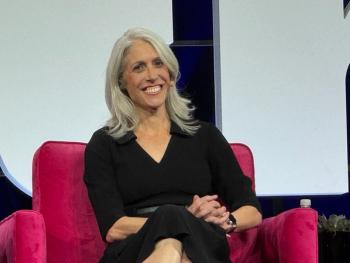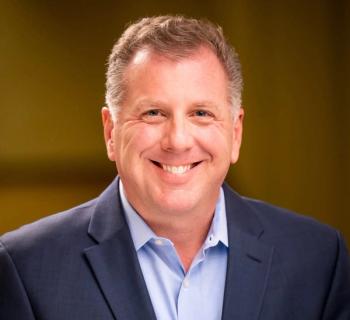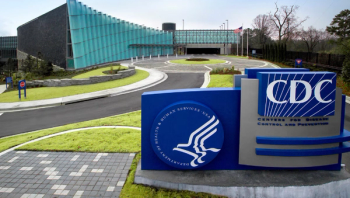
HCA Healthcare emergency leader talks about hospital readiness in disasters
Mike Wargo, HCA’s head of emergency operations, discusses the importance of leadership engagement, facing hurricanes and wildfires, and preparing for emergencies that come with no warning.
The concept of emergency operations for hospitals is relatively new, says Mike Wargo, vice president and chief of HCA Healthcare’s Enterprise Emergency Operations.
Health systems have faced severe weather events regularly, and organizations have typically discussed “emergency preparedness,” but Wargo doesn’t care for that wording.
“I like to steer away from the term preparedness and say operations, because that really represents that the program is the core fabric to the culture of the organization,” Wargo says.
In a recent interview with Chief Healthcare Executive®, Wargo talks about hospital readiness in emergencies. In his role, Wargo oversees operations for more than 180 hospitals nationwide.
Many of the system’s hospitals are in Florida and Texas, which regularly encounter hurricanes, although HCA also had to deal with
Those risks include a potential volcanic eruption from Mount Spurr in Alaska, which could affect HCA’s facilities in the Anchorage area. The
“We have a broad range of natural hazard risks, and certainly the man-made risks just compound that,” Wargo says.
Wargo talks about critical elements of emergency operations, the importance of leadership engagement, dealing with events that come with little or no warning at all, and collaborating with local officials and other health systems.
(See part of our conversation with Mike Wargo in this video. The story continues below.)
‘Readiness is key’
Wargo came to HCA in 2016. Previously, he spent 18 years in Pennsylvania. He developed hospital emergency operations for the Lehigh Valley Health Network in northeastern Pennsylvania.
When he joined HCA, Wargo says he focused on driving the importance of emergency operations at the executive level. He says for every program, he stresses the value of having a leader who takes ownership and responsibility for the governance of the program.
When it comes to emergency operations, Wargo says, “Leadership engagement is the most critical factor.”
“That leader is involved, and the staff sees the importance of the leader, to say this is a priority. That becomes a priority for all. And that is the culture in our organization, but responsible leadership is key to all of this, no matter what,” he says.
Hospitals have challenges in dealing with hurricanes and wildfires, which can cause massive disruptions. But those events typically come with some time to prepare.
Tornadoes don’t come with a few days of predictions from meteorologists charting their expected path. In 2020, just before the onset of the COVID-19 pandemic, a tornado struck his neighborhood in Nashville.
“We had a significant tornado touchdown, and it really decimated the community,” he says. “So not only did we respond, but we were impacted community members, and that was my first live tornado experience to live through, let alone lead an organization through. So I've learned quite a bit about tornadoes ever since.”
“No matter where we live, there are inherent weather risks, so we have to take all of them as seriously as we can from a readiness standpoint. And what I mean by readiness, it's preparedness with the immediate ability to respond. And we use the term readiness over preparedness because of that immediacy,” he says.
Healthcare leaders must train staff for dealing with “no-notice events,” which can include tornadoes or mass shootings, Wargo says.
“That readiness is key because it means that we identified the risk,” he says. “We went through scenarios to identify what the impacts of the risk would be on our ability to perform patient care, on our ability to support our communities, and truly as a business, at the bottom line of sustainability, in operating our health care services.”
“From that we put plans in place. We educate, we train, we drill. And that's what comes to readiness, because we've identified the risk, we identify the impacts, we mitigate it through education, training and equipping our employees and our responders, that if that risk comes to fruition, they know what to do, when to respond, how to respond, and we can address the risk or the threat immediately,” he says.
Knowing your neighbors
Health systems must build relationships with local and state officials to improve their readiness for emergencies.
But Wargo also says hospitals must also reach out to other health systems in their area, including their competitors, to prepare for severe weather events and other disasters.
In the emergency operations world, competing organizations are referred to as neighbors, Wargo says.
“We need to know who our neighbors are,” Wargo says.
“We've got to do that as community members, and you can only do that with a relationship that then builds to your local emergency management and public safety team,” he adds. “You need to know that if you have a risk of anything from a fire in a facility to a violent event, who is your responder? What are their capabilities? If you don't know what their capabilities are, you truly can’t have a good readiness program.”
It’s critical to have conversations before emergencies take place, and for systems to be willing to be open with each other about where they could face problems.
He says if health systems can supplement each other’s capabilities, they’ll improve their sustainability in a crisis and, more importantly, have better outcomes for patients.
“That means being vulnerable,” Wargo says. “That means sharing with other health systems where you might not have a resource, you might need help, so that they can help, and it's bi-directional in communication.
“So I'm a big advocate and proponent of being a good neighboring health system, building leader-to-leader connections for those that are directors up to CEO levels. It's important to foster an environment where your staff members have the ability to build a relationship with their counterparts. That's the only way we as a community of healthcare organizations are going to best help our communities.”
The unexpected
Even by training and establishing strong readiness plans, Wargo says it’s impossible to plan for every contingency.
“All of us, every single organization, if they say we're 100% ready and prepared, they're not being truthful,” Wargo says. “As prepared and as comprehensive and well developed as our emergency operations program is, and the lean forward that we give to any event, there are always circumstances that catch us off guard.”
In some cases, organizations may look to have extra resources after an event, when they should have been put in place ahead of time.
Health systems need to rigorously examine their planning and response for emergencies and look at ways they could have been improved.
“You've got to learn from every one of those and make an informed leadership decision,” Wargo says. “Do I activate the resource pre-event and take the risk that it might be an expense that never gets used? That's a leadership call that you need to really look at the information, the data and the risk to your organization, your community, and say it's worth the investment to bring a resource in prior so that we can ensure that our doors are open and the community gets the care they need.”
When in doubt, Wargo suggests health systems should stock up ahead of time and mobilize additional resources, even if there’s a chance that they won’t be used.
“In health care, if we lean forward and bring those resources in, that means less patients that go without care,” Wargo says. “That means we can optimize the ability to care, let alone the quality of care, that we can provide to our patients.”
Coming tomorrow: Training for emergencies does beyond the big drills








































